In the first part of this article, which can be found here, we looked at a breakdown of the nutritional content of these two amazing foods from the prolific rose (see as an example, rosa filipes Kiftsgate below left). In this article I'll share why our poultry can benefit from this all-year-round food-crop with a wealth of vitamins, minerals and phytochemicals to keep themselves in the best of health and beauty.
Rose Hips and Leaves - Why our poultry need the nutrients they offer
Due
to the problems surrounding antibiotic overuse and in particular the
ban on using them in organic farming, there has been some academic work
on rose hips as an alternative 'food as medicine'. Studies into rose
hips, such as Diaz-Sanchez, S., D'Souza, et al (2015).
Botanical alternatives to antibiotics for use in organic poultry production
Poultry science, 94(6), 1419-1430. reveal the considerable properties of
rosa canina hips, in re antimicrobial, antiviral, antifungal, antioxidant, anti-inflammatory, and immunostimulatory.
Attendant
Vitamins, Minerals and Phytochemicals are dealt with separately below
but in reality their virtues are often dependent on each other as they
work in synergy. I have highlighted some instances of this where they
appear in the text.
Vitamin A (Retinol) precursor: beta-carotene
- is important not only as in humans for the health of
eyes, skin, normal growth and development and the transport of Calcium
to the bones but also for shell quality. Without sufficient vitamin A,
calcium is deposited in the soft tissue thus risking heart conditions
and skeletal problems. Beta-carotene
also, has strong antioxidant properties and can protect your birds from many
potential conditions associated with free-radicals. Vitamin A deficiency
also causes keratosis (see my article here), which encourages the proliferation of external parasites. Also see under Zinc for its role in the transportation of Vitamin A
Vitamin B1 (Thiamine) Thiamine, arguably plays the biggest role; supporting the crucial flow
of electrolytes in and out of the nerve and muscle cells, as well as
metabolizing those carbohydrates and lipids found in foodstuffs.
Thiamine helps convert the food to energy, especially for organs that
use a great deal of it, such as the brain and nervous system. In
effect, the brain can be severely compromised by a thiamine deficiency,
which also results in the loss of co-ordination.
Vitamin B2 (Riboflavin) as above, is responsible for the
production of energy from food and the maintenance of a healthy nervous
system, in particular Riboflavin works in synergy with B6 and B9.
Riboflavin is also responsible for maintaining healthy blood cells. In
quail, poultry and other game birds deficiency in Riboflavin causes
curled toe paralysis which is fatal if left unattended - see
my article on Riboflavin for a quick cure and prevention. Chicks hatching with low riboflavin can also have beak malformation.
Vitamin B3 (Niacin) as above with the other B vitamins, is
responsible for the maintenance of optimal nervous system function.
There is some recent research showing that there are possible side
effects with supplementing with this vitamin in high doses, so getting a
requirement through food rather than supplementation seems to me to be
optimal. Niacin promotes growth and when deficient can cause retarded
development, poor feathering, loss of appetite and motor dysfunction.
Chicks from deficient parents can also have beak malformations
Vitamin B5 (Pantothenic acid) Again important for food conversion
to usable energy and for optimal nervous system function. Vitamin B5 is
crucial for the formation of acetylcholine, the primary chemical which
allows the brain to communicate with the organs of the body. B5
deficiencies can also result in poor feathering and low
hatchability of eggs.
Vitamin B6 (Pyridoxine) As with all the B complex vitamins,
Vitamin B6 plays an important role in a range of physical and
psychological functions, including maintenance of an optimal immune
system.
Vitamin C (L-ascorbic acid) Sometimes known as the 'grandfather of traditional antioxidants' and
thus involved in maintaining optimum electron flow in the cells. In my
experience it is the 'go to' vitamin an adult bird will consume when
under stress and incidentally it is the first one to be depleted.
Vitamin C is also responsible for the better absorption of Iron,
necessary for growth particularly in the young and active chick. It is
also essential for collagen synthesis, thus important for the structure
of the bones, blood vessels, tendons and ligaments. I like to give my birds oyster shell because I think this enables them
to adequately judge for themselves how much they are taking in. I am
also aware that wild birds use snail shells and other potentially
calcium rich sources, such as calcareous grit to provide this mineral in
their diets. However, plant sourced calcium was found in a study: Nutrition and Feeding of Organic Poultry (Blair 2008) to be as bioavailable to poultry as that of the usual sources of limestone and oyster shell.
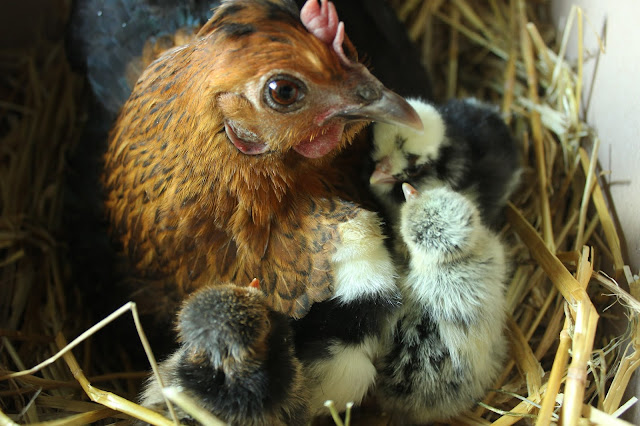
Vitamin E is made up of eight compounds (Tocopherol/tocotrienols) it has
antioxidant properties and is important for growth and nervous system
recovery in times of stress. It has also been shown to have significant
impact upon fertility in poultry, in both sexes and upon the hatchability
and general health of the chicks. Vitamin E is crucial in protecting eye
and brain health and helps the body utilise Vitamin K.
Vitamin K1 (Phylloquinone) is found primarily in plants and has a role in the transport of Calcium to the bone and thus in quail
and other poultry to the formation of shell. If Calcium has formed in
the soft tissue (arterial calcification) both phylloquinone and to a
greater extent menaquinone (Vitamin K2), have the ability to reverse it.
Vitamin K1 goes directly to the liver and is well known for its ability
to help to clot the blood and avoid blood loss. It is also important for nerve impulse transmission and muscle co-ordination.
Copper required
for the activity of enzymes associated with
Iron metabolism, elastin
and collagen formation, melanin production and for the integrity of the central
nervous system. It is required with
Iron for normal red blood cell
formation. Copper is also required for bone formation, brain cell and
spinal chord structure, immune response and feather development and
its pigmentation.
Iron is needed to produce haemoglobin, a protein found in red
blood cells that carries oxygen from the lungs and transport it
throughout the body. It also helps regulate cell growth, maintains brain
function, metabolism, endocrine and immune system function and is
involved in turning food into energy production. Without enough iron, a
body will suffer chronic fatigue and as quail have a high basal
metabolism this can be a real problem. Iron, as with Copper and Zinc
also influences the richness of feather pigmentation.
Manganese is needed for optimal growth, shell quality and hatchability of eggs and
for healthy bone structure, bone metabolism and help in creating
essential
enzymes for building bones. Deficiency of manganese in poultry can cause
perosis, a
leg deformity, a condition where the tendons of the legs slip from the
hock. Manganese also acts as a co-enzyme to assist
metabolic activity. Used for the formation of connective tissues,
absorption
of Calcium, functioning of thyroid gland and sex hormones, regulate
blood sugar and metabolism of fats and carbohydrates it is also a powerful
antioxidant. Deficiency in the parent bird can lead to poor development of
embryos and low hatchability, those chicks
that hatch are prone to poor feathering and slow development and or can
suffer from malformation.
Magnesium is responsible for cell division, muscle and nerve function
including the heart, mitochondrial efficiency, bone density and the
metabolism of various minerals including Calcium, Phosphorus, Iron and Zinc as well as several hundred enzymes and the activation of Thiamine.
As such it impacts on the laying process of a bird, eggshell
thickness and the hatchability and subsequent growth of the chick.
Phosphorus is important for a whole raft of physical and nervous
system function. Plant-based phosphorus is often conjectured to be less
bioavailable because it is bound with phytates. To me, this seems
relevant only in the seed and grain form, which is understandable as the
plant is protecting its 'offspring' from being digested. My
conjecture would be that within the leafy plant itself, particularly one where the fruits are meant to be consumed to disperse the 'hairy' seed (obviously to be excreted intact), phytates would not be an issue. Phosphorus is also linked with bone density and the
transport of Calcium, thus in poultry with the formation of shell and
hatchability of the chicks. Chicks deficient in phosphorus may also have
soft beaks and bones (rickets).

Potassium Is important for the maintenance of electrolyte balance thus of the functioning of the body's chemical and electrical
impulses, stabilisation of blood sugar and maintains, along with Calcium, neuromuscular activity, regulation of the heart beat and maintains
acid-base balance. Under stress the kidneys excrete Potassium and
conserve Sodium. Potassium levels and balance needed for egg
production including egg weight and thickness of shell. It is important for various physical and nervous system
functions, including the brain, kidneys, muscle contractions,
fluid levels and blood pressure. Deficiency causes low hatchability and
retarded growth in chicks.
Zinc Is required for normal protein synthesis
and metabolism and is also a component of a number of enzymes such as
carbonic anhydrase, which is essential for eggshell formation in the
shell gland. Other important zinc enzymes in the bird include
carboxypeptidases and DNA polymerases. These play important roles in immune response, in skin and wound healing and hormone
production. Zinc also has a role in the transportation of Vitamin A from storage in
the liver for use in the rest of the body. Zinc deficiency in the parent
bird will also cause a prevalence of low hatchability and the
self-explanatory condition known as 'dead in shell'. Birds deficient in
zinc also exhibit 'frayed' feathers. Zinc
deficiency also impacts on feather pigmentation in certain colours of
plumage.
Phytochemicals Phenolic compounds have antioxidant, antimutagenic
and anticarcinogenic effects. Antioxidants delay the aging process
and to the decrease of the inflammation and oxidative stress risk,
related to chronic disease.
Thanks
for dropping by and do feel free to share experiences or ask for
further information in the comment section. If you have enjoyed this
piece and found it
useful think about sharing it with your family and friends, on social
media and also maybe about joining this blog
and/or subscribing to my Youtube channel or even supporting us on
Patreon or
It all helps to keep me going!
Until next time, all the very best from sunny Normandie!
Sue
© 2021 Sue Cross
RELATED ARTICLES
Food for Free Fabulous Forage Part 6 Rose Leaves and Hips
For thousands of years the rose, hips,
leaves and blossoms have been used as medicinals for both physical and
nervous system ailments. .....read more
Food for Free. Fabulous Forage Part 5 Rose Petals
One of the main roses I use for both cooking, medicinals and which my
hens very much enjoy is, not surprisingly, rosa gallica Officinalis, or
The Apothecary Rose... read more
Quail, Chickens & Watercress - A winning combination
So what is it that makes watercress so special? It's not
just the quantity of individual vitamins and minerals but the...
read more
Quail, Chickens & Watercress Part 2 - Cultivation & Harvest
Contrary to its common name
nasturtium officianale does not need to be grown in
water, moist soil is fine. However, it does give the watercress...
read more
Nutrient from the Sun - How Poultry Obtain and Make Vitamin D₃
The full potential of D₃ in the maintenance of the physical and nervous
systems of
humans, animals and
Providing Forage for Organic Poultry Part 1
Going backwards to go forward - If you are setting up a forest garden to run your poultry
through it, you are probably going to be short of certain wild pasture elements...
read more
Providing Forage for Organic Poultry Part 2
Continuing an in-depth look into forage and discussing the what, when, where from and why...
read more
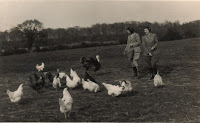
Food for Free. Fabulous Forage Part 1 Grass
For
centuries farmers and homesteaders raised poultry on a forage-based
diet supplemented only by a handful of grain and the occasional..
read more
Food for Free. Fabulous Forage Part 2 Chickweed
Stellaria media an incredible food and medicinal for poultry, an in-depth look at this ubiquitous weed..
read more
Food for Free. Fabulous Forage Part 3 Tree Fodder & Tree Hay
The idea of tree fodder is inextricably linked with the changing
landscape, the full domestication of animals, the concept of farming and
the clearance of the forests...
read more



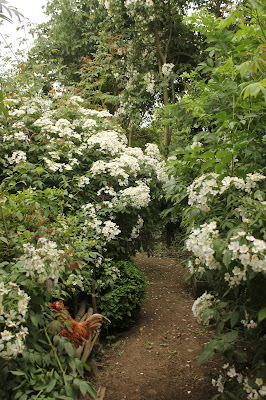

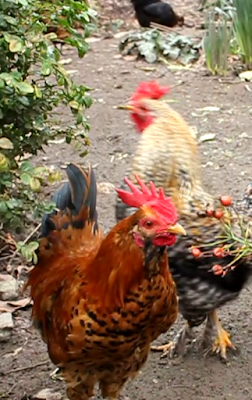


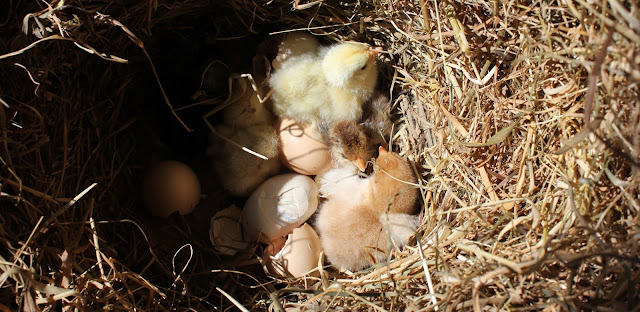










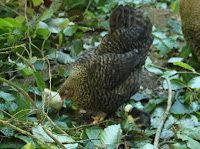

No comments:
Post a Comment